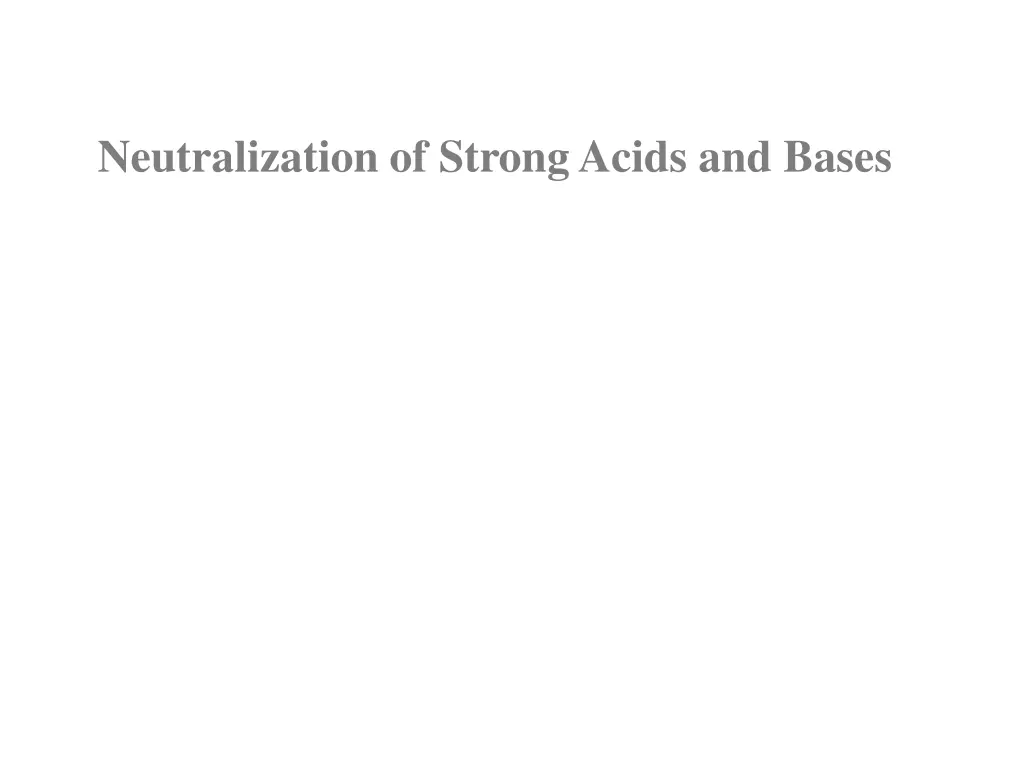
Understanding Neutralization Reactions and Henderson-Hasselbalch Equation
Explore the concept of neutralization in chemistry, illustrated with examples of strong acids and bases reacting to reach equilibrium. Dive into the Henderson-Hasselbalch equation to understand the relationship between pH, pKa, and concentrations of acids and bases in solution.
Download Presentation

Please find below an Image/Link to download the presentation.
The content on the website is provided AS IS for your information and personal use only. It may not be sold, licensed, or shared on other websites without obtaining consent from the author. If you encounter any issues during the download, it is possible that the publisher has removed the file from their server.
You are allowed to download the files provided on this website for personal or commercial use, subject to the condition that they are used lawfully. All files are the property of their respective owners.
The content on the website is provided AS IS for your information and personal use only. It may not be sold, licensed, or shared on other websites without obtaining consent from the author.
E N D
Presentation Transcript
Example How many ml of 0.05 N HCl are required to neutralize exactly 8g of NaOH? At the equivalent point: The no. of moles H+added = no. of moles OH-present Lacid Nacid= no. of (moles) equivalents of H+ added wtNaOH/ MwtNaOH= no. of moles of NaOH (OH-) present Lacid Nacid= wtNaOH/ MwtNaOH Lacid 0.05 = 8 / 40 Lacid= 0.2/ 0.05 = 4 L or 4000 ml.
Henderson Hasselbalch Equation HA H++ A- [H+] [A-] [HA] Ka = [H+] [A-] =[HA] Ka Ka[HA] [A-] [H+] = Multiply by log log[H+] = log Ka + log [HA] [A-] -log Ka - log [HA] [A-] pKa + log [A-] [HA] Multiply by -1 -log[H+] = pH =
Henderson Hasselbalch Equation MOH M+ + OH- [M+] [OH-] [MOH] Kb = [M+] [OH-]=[MOH] Kb Kb[MOH] [M+] [OH-] = Multiply by log log[OH- ] = log Kb + log [MOH] [M+] - log Kb - log [MOH] [MOH] Multiply by -1 -log[OH-] = [M+] pKb+ log [M+] pOH =
